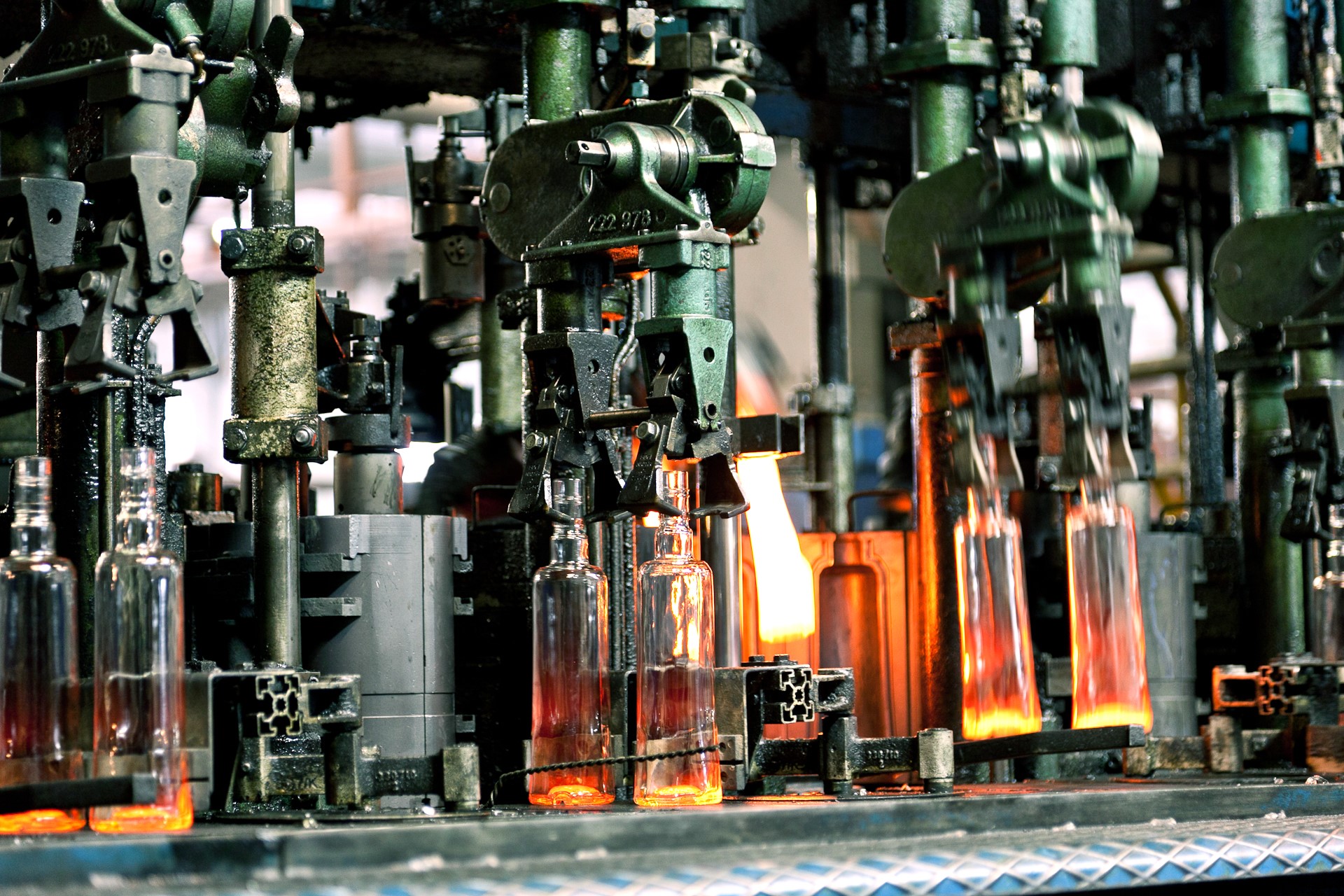Hot End Coating Products
Reliable product quality and flexibility in packaging and capacity, adapted to the customer’s supply chain needs. We deliver worldwide in accordance with REACH guidelines.
| Produkt | Wirkstoff |
| BNT-COAT 100 | Monobutyltin Trichloride (MBTC) |
| BNT-COAT 257 | Tin Tetrachloride, stabilized (SnCl4) |
The Production of Glass Containers
Quartz sand, sodium carbonate and potash fuse together with cullet at 1,200 °C. The furnace produces a steady stream of viscous glass which is cut into cylinders of exactly the same size – enough material for exactly one container (e.g. a bottle). Gravity and a system of slides distribute them into empty molds – two halves closing around the glowing mass. First, a coarse blank is produced, which is then given its final shape with compressed air. This is called the hot end.
But the new container is still fragile. Without further treatment, it could not withstand the stresses of assembly line production. Targeted cooling in the hardening furnace prevents stresses in the glass that would otherwise cause it to shatter. A two-stage coating, before and after hardening, increases the resistance to physical stress.
Hot End Coating
After forming, the still hot glass is transported on a conveyor belt. However, in order to prevent stress cracks during production and industrial filling, the containers must be treated first – a coating that protects the glass from abrasion and scratches, preserves its strength and provides additional smoothness for better handling. It enables lighter, yet safer vessels. In the first stage, the Hot End Coating is applied before the hardening oven and directly onto the soft glass.
To do this, the containers pass through a coating hood in which an organic tin mist is sprayed. The organic part evaporates on the glass surface at 450 to 600 °C, leaving behind a homogeneous layer of tin oxide. It seals microcracks on the rough form, thus increasing the mechanical strength and forming the basis for the subsequent cold-end coating. Monobutyl tin trichloride (MBTC) is most widely used, but tin(IV) chloride (SnCl4) is used as well.
Microscopically, the coating consists of individual agglomerates of tin oxide which are randomly distributed on the glass surface. As the thickness of the coating increases, so does the number and size of the particles until complete coverage is achieved. From this point, further coating only increases the layer thickness, the chemical and physical properties remain constant.
Hardening/Tempering and Cold End Coating
Hot end coating is followed by targeted cooling in the hardening furnace. Depending on the thickness, the glass is evenly cooled from an input temperature of approx. 550 °C in 20 to 60 minutes, so that no stresses occur in the material.
This is followed by the second stage of coating – in the cold end. A thin film of polyethylene wax is applied as a water-based emulsion. The result is an invisible, combined coating with a smooth, slippery surface that makes scratching virtually impossible and also prevents the bottles from sticking together during subsequent production.
Economic Importance of Container Glass
The market for glass containers is highly developed; at the same time, the industry can look forward to a future with potential. Broken and old containers must be regularly renewed and design changes converted into assortments. Due to their weight and difficult transport, glass containers are always produced close to the end user.
Another factor is sustainability. Glass can be reused endlessly, either in the form of one and the same container, or by recycling the broken glass. In both cases, no new raw materials are consumed – just the energy needed for production or cleaning. However, legal concerns about the use of a used containers play a role.
Optimizing production – avoiding downtime and ensuring quality standards – is crucial for economic success.

